Human-wildlife conflict and coexistence is a shockingly common problem, often with enormous consequences for both individual animals and entire populations.
When human-wildlife conflict comes to mind, you may immediately think of wildlife crime instead - which isn't wrong, since many regions with wildlife crime problems like poaching are also areas where people may frequently deal with human-wildlife conflict, causing the two issues to go hand-in-hand. But human-wildlife conflict is a much broader issue encompassing many ways that human presence and interference can cause problems for us and animals alike. Human-wildlife conflict includes:
- Elephants trampling a farmer's crops, resulting in retaliation
- New real estate developments infringing on ecosystems where predator species live, leading to predators having less territory and less food, which in turn leads to predators attacking domestic animals and livestock
- Freeways dividing the territory of animals like mountain lions, leading to wildlife venturing into neighborhoods or being killed by cars
- Lead bullets used in hunting causing scavengers like condors to die of lead poisoning
These are just a few examples of how humans can negatively impact wildlife, and it's clear to see how many of these scenarios could escalate. Human-wildlife conflict solutions don't just include ways in which we can prevent these issues (for example, through tracking predators, monitoring populations' territories, or building barriers and wildlife crossings monitored by sensors), but also the ways in which we can help people connect with wildlife and care about learning to live alongside them.
If you're interested in solutions that can prevent human-wildlife conflict, join this group and get to know the people who are working to protect and save species around the world!
Header image: Casey Allen on Unsplash
No showcases have been added to this group yet.
- @mtucker
- | She/Her
Interested in large scale patterns in ecology, biogeography & evolution that can aid our understanding of species vulnerability to changing environments.
- 0 Resources
- 0 Discussions
- 4 Groups
As a fresh electrical engineer, I am passionate about leveraging technology for biodiversity monitoring, logging, and poaching detection in tropical regions.
- 0 Resources
- 0 Discussions
- 9 Groups
Zoologist, currently serving as Head of Field Studies at Absolute Adventure (UAE). An environmental education professional with expertise in program development: field studies, wildlife conservation, research-based fieldwork, and outdoor education.
- 0 Resources
- 0 Discussions
- 4 Groups
- @kidogo
- | He/him
Wildlife Researcher
- 0 Resources
- 0 Discussions
- 4 Groups
I am a biologist who is currently studying for a master's degree in Natural Resources and Environmental Management Sciences, IPB University. In terms of biology, I have passionated in community development and wildlife conservation.
- 0 Resources
- 0 Discussions
- 8 Groups
- @machadoams
- | He/Him
Universidade Federal de Santa Catarina (UFSC)
I am a behavioural ecologist interested in the role of individual variation in ecological interactions and in human-wildlife dimensions
- 0 Resources
- 0 Discussions
- 9 Groups
- @Palinda
- | He
Corporate Responsibility Specialist & Sustainability/ Climate Change Professional Helping Conservation, Restoration, Community Livelihood Development ESG strategy and Sustainable Development.
- 0 Resources
- 0 Discussions
- 8 Groups
- @valengsb
- | she / her
GIS specialist for Audubon Americas | Biologist with an emphasis on Conservation and Sustainable Development | Innovative approaches in the study and monitoring of biodiversity for possible, biodiverse, and just futures.
- 0 Resources
- 0 Discussions
- 18 Groups
Michigan State University
Conservation Criminologist
- 0 Resources
- 2 Discussions
- 7 Groups
- @CDean
- | she/her
Grad Student, UW-Stout, Beaver habitat biodiversity research, process based restoration
- 0 Resources
- 7 Discussions
- 6 Groups
- @JakobWiren
- | He,him
Swedish soon-to-be graduate engineer in AI/ML and robotics. Writing my master thesis in using decision trees for anti-poaching in Limpopo, South Africa. Am passionate about conservation, AI and travelling. Help me find a way to help you!
- 0 Resources
- 1 Discussions
- 13 Groups
- @Sairaakber
- | Saira
I am an experienced ecologist and wildlife conservationist dedicated to preserving biodiversity. With expertise in wildlife conservation research, I lead projects to protect endangered species and restore ecosystems. I advocate for conservation policies & sustainable solutions.
- 0 Resources
- 0 Discussions
- 4 Groups
A secure platform designed for those working to monitor & protect natural resources. Insight facilitates sharing experience, knowledge & tools to increase efficiency & effectiveness in conservation. By...
7 November 2023
An electric, solar-powered fence erected by the Rhino Ark Charitable Trust partnering with the Kenya Wildlife Service completed in 2009 evolved into the longest conservation barrier that safeguards vital forests in the...
31 October 2023
The illegal wildlife trade varies widely regarding species and geographical variance, necessitating niche and tailored research. Against this background, this study on elephant poaching in Tanzania was conducted at the...
30 October 2023
Hi, I represent a consortium (CRO/FI/DE) which plans to apply to the call in the link: HORIZON-CL6-2024-FARM2FORK-01-1 Agro-pastoral/outdoor livestock systems and wildlife management If you have a research...
23 October 2023
Careers
The Institute of Zoology (IoZ), the research division of the Zoological Society of London (ZSL), is seeking to fill three new permanent positions by recruiting outstanding early-career researchers as Research Fellows (...
20 October 2023
Listen in on our interview with Mara Elephant Project’s Tracking Manager, Wilson Sairowua, as he explains how MEP is using software, geofencing and drone technologies to resolve human-elephant conflict across Maasai...
20 October 2023
We're delighted to announce that Connected Conservation Foundation and Airbus Foundation have today launched round 2 of the ‘Satellites for Biodiversity Award’.
2 October 2023
Hear about the ways Uaso Ngiro Baboon Project (UNBP) works with Laikipia's local communities to improve relationships between humans and baboons through this talk by Co-Director - Dr. Corinna Most on human-baboon...
26 September 2023
Article
Five #tech4wildlife people, projects and updates that caught our attention this month. An AI supported bear early warning system, a project that's connecting indigenous communities with high speed internet, exploring...
12 September 2023
The WCS team in Uganda is working with impacted communities, district leaders and wildlife authorities to come up with innovative solutions to Human Wildlife Conflicts and curb wildlife crimes in our time. Check out...
5 September 2023
Wilson Sairowua, Tracking Manager at Mara Elephant Project (MEP) narrates how tech4change, Alibaba Cloud's Geo Fencing System paired with collaring has helped to mitigate human-elephant conflict across Maasai Mara and...
1 September 2023
Location intelligence helps Born Free Kenya understand where communities and lions are in conflict. Outreach to fortify cattle corrals is guided by smart maps and spatial analysis.
17 August 2023
October 2025
event
September 2024
event
32 Products
3 R&D Projects
42 Organisations
Recently updated products
Recently updated R&D Projects
Recently updated organisations
| Description | Activity | Replies | Groups | Updated |
|---|---|---|---|---|
| Hi all, Just saw this on the BBC website: http://www.bbc.co.uk/news/blogs-news-from-elsewhere-38288999 Dogs in one town... |
|
Human-Wildlife Coexistence | 8 years 8 months ago | |
| @Suzanne.Stone have you had any success with your trials in Idaho? |
|
Human-Wildlife Coexistence | 8 years 9 months ago | |
| Hi everyone! I have just posted about my machine-vision based elephant-detection system which I am currently attempting to develop! https://www.wildlabs.net/... |
|
Human-Wildlife Coexistence | 8 years 9 months ago | |
| Hi all, I thought I'd alert you to this recent journal article, which looked at all published research on predator... |
|
Human-Wildlife Coexistence | 8 years 11 months ago | |
| Hi John, I have two good friends in Kenya who have some answers. I'll ask them to come here and tell you more... Marie |
|
Human-Wildlife Coexistence | 8 years 11 months ago | |
| http://gizmodo.com/drawing-eyes-on-cow-butts-may-ward-off-hungry-lions-1783744270 Drawing Eyes on Cow Butts May Ward Off Hungry... |
|
Human-Wildlife Coexistence | 9 years ago | |
| Hello all, Another thought I had regarding human-wildlife conflict. Since wildlife migrations occur around similar times, every year,... |
|
Human-Wildlife Coexistence | 9 years 3 months ago | |
| Ho John, That's a great idea and thanks for sharing, but as you said, limitations on battery and speaker capacity abound. Might anyone else have any thoughts on how we... |
|
Human-Wildlife Coexistence | 9 years 3 months ago |
Instant Detect 2.0: A Connected Future for Conservation
17 January 2018 12:00am
FIT Cheetahs
4 December 2017 12:00am
HWC Tech Challenge Winners Announced
1 November 2017 12:00am
HWC Tech Challenge Announcements
13 September 2017 10:54am
HWC Tech Challenge Update: Meet the Judges
20 October 2017 12:00am
Download New Conservation Tech Guidelines: Camera Traps, Acoustics and LiDAR
11 October 2017 12:00am
DAS: A Scaleable Solution For Protected Area Management
26 September 2017 12:00am
Elephant's Banquet
19 September 2017 12:00am
Predator Protection Device emits random lights and sounds
15 June 2017 5:56am
14 September 2017 11:08pm
Hello, this device looks really interesting...has anyone tryed? what brand is it? how much does it cost? what's the range of the speakers? what kind of sound does it makes? I've use foxlights and niteguard...I think animals eventually will get use to it and avoid the repelling device or simply just don't care of it. I think We have to use a repelling device that use more than one technique, for example lights, sound and chemical repelling, wildcats don't like other smells, specially citrus, pine and other specific, I think that capsaicin powder or spray it looks like the proper chemical, I've come to and idea that is to take a camera "trap" or a CCTV (GSM or UHF communication)+android app+mobile phone and the the camera gets the sensor activated the video will send to the mobile phone and the farmer can see the animal live...and to decide it to active or not the repelling system..that can be sound, light and chemical (capsaicin). This will teach a "lesson" to the predator and send a message to stay away from the farm.
have a good one
HWC Tech Challenge - General Discussion
30 June 2017 4:58pm
12 September 2017 5:31pm
Hi Claire,
Congratulations on getting your proposal in!
If you've explicitly asked for a confirmation, you should have already recieved it. Otherwise everyone who has submitted a proposal should expect a confirmation tomorrow.
Cheers
Steph
13 September 2017 10:42am
The Human Wildlife Conflict Tech Challenge closed on the 12th of September, 2017. Thank you for all your submissions and enthusiasm over the past months!
In total, we received 46 proposals. Entries included 22 proposals answering the elephant case and 24 for the carnivore case (17 for the tiger case and 7 for the polar bear case). Proposals came from 13 different countries across the globe - it is fantastic to see such a widespread interest in the subject and minds coming together to find solutions!
These proposals are now under review by an independent panel of HWC and technology experts. We will announce the two winners on the 20th October, 2017. Until that time, we will continue to keep you informed throughout this exciting process in the Announcements Thread in this dedicated WILDLABS HWC Tech Challenge Community Group.
Beyond the challenge, if you are interested in helping create new solutions for Human-Wildlife Conflict, we encourage you to get involved with our Human-Wildlife Conflict group here on WILDLABS.
Best of luck to all our applicants!
The HWC Tech Challenge Team
13 September 2017 8:17pm
Hi Mark and Teun,
we have been investigating this technology also. It is already being used, but has two problems. First, their reach is often very limited (around 50m) and the source of the trembles is hard to identify. Second, elephants are big, but their feet are also large. The consequence is that human steps cause more trembles that a "tiptoe-ing" elephant ;-)
Best,
Jan Kees
HWC Tech Challenge - Asian Elephant Case
30 June 2017 5:09pm
10 September 2017 3:35pm
Hi Femke,
We have submitted the solution proposal. Pls acknowledge upon receiving.Thank You!.
Regards,
Suniel
11 September 2017 4:38pm
Sorry I came across this challenge only a few days ago. It would not be possible for me to submit the idea I guess with now only 24 hours to go. Incase this challenge is not resolved please let me know I will be very happy to take up this challenge in future with or without a prize money.
Till now I was trying to form an idea on the basis of some research work which was inspired from this article. Please go through if you find it useful for helping elephants.
http://news.stanford.edu/news/2005/june1/elephant-052505.html
11 September 2017 4:59pm
Dear Somak,
Thank you very much for writing and we are sorry information on the challenge did not reach you in time. We are certainly interested in furthering discussions around various tools that can be used in such cases, so please feel free to continue the discussion in the Human Wildlife Conflict Community Page, which is one of the discussion sections on WILDLABS. Perhaps our other community members will also have thoughts to contribute to that conversation. If you do have a tool that you would like to test, at some point, we can discuss at that time how we can help. Thank you again for your interest.
Best,
Nilanga
HWC Tech Challenge - Polar Bear Case
30 June 2017 5:17pm
24 July 2017 8:50am
Hi Pachuco,
Interesting line of tought and I'm very curious to learn more about your ideas! The main reasons for human-polar bear conflict are related to the loss of sea ice habitat. In areas where sea ice retreats earlier and freezes back again later in the season, the time bears spend on shore gets longer. This combined with increased human activity in the Arctic leads to higher probability of interaction between people and bears. The animals are attracted by human (and dog) food and by waste. Please find more information about this and the reasons for conflict in the attached article (which can also be found in the section 'additional background reading + resources').
Femke
8 September 2017 4:49pm
Hi, where do you plan to test the polar bear system ? I need to know that to calculate the cost to go there and put it in the proposal.
Regards.
Gwenael
8 September 2017 5:30pm
Hi Gwen,
That's a tough question Gwen! And for any destination in the Arctic counts: it is horribly expensive! I suggest you count on Iqaluit in Nunavut-Canada. Access is from Ottawa. A cheaper option is Churchill in Manitoba-Canada. These give you some reference to find prices. But I suggest you make clear note about travel expenses will vary widely according to which field test site is selected and that you provide an indicative budget for travel only. I am hestitant to pin that down now as the proposed solution also will define the more suitable location by itself.
Best regards,
Gert
HWC Tech Challenge - Tiger Case
30 June 2017 5:11pm
7 September 2017 6:34pm
Hi Claire!
It is rather tricky to share GPS data, if we had them at hand, because of security. So I am afraid we are not able to give such data at this point in time. I assume you have something worthwhile in mind how such data can help detect animals early. I am really keen for you to write out your concept & experience in the HWC TechChallenge proposal form and submit it to us before Tuesday next week (when we close the challange). If our panel things this is a worthwile idea / concept to develop and test, we will make all available data available of course which is relevant to the fieldsite we would like your plan to be tested!
Looking very much forward to receive your proposal!
Gert
7 September 2017 6:34pm
Hi Claire!
It is rather tricky to share GPS data, if we had them at hand, because of security. So I am afraid we are not able to give such data at this point in time. I assume you have something worthwhile in mind how such data can help detect animals early. I am really keen for you to write out your concept & experience in the HWC TechChallenge proposal form and submit it to us before Tuesday next week (when we close the challange). If our panel things this is a worthwile idea / concept to develop and test, we will make all available data available of course which is relevant to the fieldsite we would like your plan to be tested!
Looking very much forward to receive your proposal!
Gert
7 September 2017 7:04pm
Thank you, Gert. My proposed solution takes security into account heavily. Excited to share it with you and the panel as well.
Claire
A first-person account of the capture of a tiger in Pilibhit: Four elephants and a bulldozer, as seen from a drone
10 August 2017 12:00am
HWC Tech Challenge - Additional background reading + resources
3 July 2017 5:58pm
5 July 2017 11:32am
@SamWilliams highlighted another timely publication fresh off the press yesterday that might be of interest to folks looking into the Polar Bear case:
Polar bear attacks on humans: Implications of a changing climate
James M. Wilder, Dag Vongraven, Todd Atwood, Bob Hansen, Amalie Jessen, Anatoly Kochnev, Geoff York (@gyork), Rachel Vallender, Daryll Hedman, Melissa Gibbons
Understanding causes of polar bear (Ursus maritimus) attacks on humans is critical to ensuring both human safety and polar bear conservation. Although considerable attention has been focused on understanding black (U. americanus) and grizzly (U. arctos) bear conflicts with humans, there have been few attempts to systematically collect, analyze, and interpret available information on human-polar bear conflicts across their range. To help fill this knowledge gap, a database was developed (Polar Bear-Human Information Management System [PBHIMS]) to facilitate the range-wide collection and analysis of human-polar bear conflict data. We populated the PBHIMS with data collected throughout the polar bear range, analyzed polar bear attacks on people, and found that reported attacks have been extremely rare. From 1870–2014, we documented 73 attacks by wild polar bears, distributed among the 5 polar bear Range States (Canada, Greenland, Norway, Russia, and United States), which resulted in 20 human fatalities and 63 human injuries. We found that nutritionally stressed adult male polar bears were the most likely to pose threats to human safety. Attacks by adult females were rare, and most were attributed to defense of cubs. We judged that bears acted as a predator in most attacks, and that nearly all attacks involved ≤2 people. Increased concern for both human and bear safety is warranted in light of predictions of increased numbers of nutritionally stressed bears spending longer amounts of time on land near people because of the loss of their sea ice habitat. Improved conflict investigation is needed to collect accurate and relevant data and communicate accurate bear safety messages and mitigation strategies to the public. With better information, people can take proactive measures in polar bear habitat to ensure their safety and prevent conflicts with polar bears. This work represents an important first step towards improving our understanding of factors influencing human-polar bear conflicts. Continued collection and analysis of range-wide data on interactions and conflicts will help increase human safety and ensure the conservation of polar bears for future generations. © 2017 The Wildlife Society.
Happy designing!

24 July 2017 9:04am
Additional information on human-polar bear conflicts can be found in this article
Seeking collaboration and co-financing for PhD research: How land tenure arrangements impact upon illegal hunting in Sub-Saharan Africa
19 July 2017 11:13am
From the Field: Developing a new camera trap data management tool
7 July 2017 12:00am
Leverage Space Technology for Wildlife Protection with the European Space Agency Kick-start Grant
5 July 2017 12:00am
From the Field: Eric Becker and designing sensors for wildlife
22 May 2017 12:00am
acoustics for Human-Wildlife Conflict Prevention, Anti-poaching, and more
27 April 2017 6:44pm
Upcoming human-wildlife conflict workshop
25 April 2017 2:16pm
Education to combat wildlife crime
2 February 2017 4:54pm
9 February 2017 1:09pm
@StephODonnell Good to hear from you, and thanks for drawing my attention to this question!
Hi Chris,
As Steph is mentioning, as Ranger Campus Foundation we aim to strengthen law enforcement in protected areas, by focusing on ranger training. We are developing an e-learning platform (Ranger Academy) and acconpanying training modules specifically targeted to the needs of rangers. The content is based on the training guidelines that were written by the big players in the field and were just made public:
http://d2ouvy59p0dg6k.cloudfront.net/downloads/anti_poaching_training_guidelines___electronic_version.pdf
Main advantages of Ranger Academy are:
- Combine e-learning with physical training and shorten the time you spend on basic level training. This enables instructors to make better use of their time when on the ground.
- Rangers can access their personal e-learning environment when they have time for it - no internet is required for following lessons. So no need to take people off patrols.
- Rangers can communicate with other rangers around the world and lessons in all modules are given by rangers.
- Managers have more insight in ranger competence levels and certificates acquired.
This turned into quite a story so will leave it at that. Let me know if there is anything I could assist with.
Best wishes,
Dominique
P.S. Attaching a picture of the filming of the Care under Fire module last month, where Joseph is demonstrating the correct use of a tourniquet. Picture copyright of Cees Baardman.

13 February 2017 12:26pm
Hi Chris,
@StephODonnell thanks for the heads up on this question!
United for Wildlife have an free online course https://learn.unitedforwildlife.org/ which has an "Introducing Conservation" lesson which covers conservation basics.
Over this year we're (for transparency - I work on the project) releasing a new series of Insights on specific areas of conservation.
So far we've released "Species and Spaces" and "Worth More Alive" insights - the latter is focussed on the Illegal wildlife trade.
We're also releasing a series of films called "Natures Guardians" which focus on the Southern African Wildlife College and cover some of the aspects of ranger training. You can view these on our YouTube channel https://www.youtube.com/playlist?list=PLH4rBFGCnvow7YQe3ycwWJ3mVR2MAwuIu or Facebook page
Thanks!
12 April 2017 5:30pm
Peter, thanks for your reply and sorry for the dealyed repsonse, I have been ahving some issues getting alerts in my email. I would like to talk to you more about your trafficking courses, especially who you have identified as your target audience and what the model was that these courses were designed aorund.
From the Field: Dr Raman Sukumar and Technology Developments Needed to Conserve Elephants
5 April 2017 12:00am
How to stop the thieves when all we want to capture is wildlife in action
23 March 2017 12:00am
From the Field: María José Bolgeri and tech to alleviate Puma-Human conflict
22 March 2017 12:00am
#Tech4Wildlife Photo Challenge: Our favourites from 2016
1 March 2017 12:00am
Working with wolves: Sheepdog puppies join new flock
28 February 2017 12:00am
Infrastructure impacts
22 December 2016 4:12pm
6 January 2017 10:06am
Hi Nilanga,
This is a topic of my interest too. I have been doing some work on getting some mitigations implemented on some highways in central India. So what excatly do you mean by tools? Some gadget to detect physical presence on large mammals around highways and railway tracks ? Or some software tools to predict animals crossings along them.
Regards
Udayan
6 January 2017 1:36pm
Hi Udayan,
Many thanks for following up and it's great to hear that it's an area of interest for you as well. I'm certainly interested to hear more about the work you've been doing on mitigation actions implemented or being tested to prevent wildlife collisions on highways in central India. Are they early detection tools? By tools, I mean either technology to detect presence and provide warnings to drivers or railway operators, or even tools to predict based on movement patterns. I'm interested in learning about any such measure that is being developed. You may be aware that in the last month alone, around 11 elephants have died from train collisions in northeast India. If there are means being developed to detect presence and prevent such deaths, it would be wonderful to know more about them and how we could test and implement such measures. Look forward to hearing from you.
Best,
Nilanga
Wolf protection vests for dogs
14 December 2016 1:49pm
Conservation Leadership Programme 2017 Award
21 November 2016 12:00am



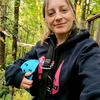
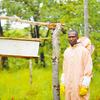




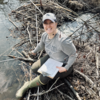











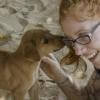





















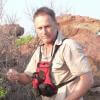

20 October 2017 2:43pm
HWC Tech Challenge Update
WInners to be announced on the 1st November, 2017
First of all, we’d like to thank you all again for your interest and participation in the Human Wildlife Conflict Tech Challenge!
We were (and still are) overwhelmed by all the great ideas submitted by an enthusiastic group of technologists with a heart for nature. Our dedicated group of panellists has been hard at working reviewing all 47 proposals and is now in the midst of discussions about how the various proposed tools could be implemented on the ground.
Due to the high quality and quantity of applications, this process has taken a little longer than expected. So we have made the decision that we will take some extra time to be certain that we've chosen the best possible proposals.
We will announce the winners of the challenge on 1st November 2017.
Initial Feedback from our Judges
Although we are not ready to announce the winners, we can share some initial feedback from the experts who will be making the difficult decisions about which proposal to take forward into field deployment.
Amalia R Maling, a community-based conservaiton specialist who is part of our TIger Case Judging panel, shared her inital thoughts about the applications:
“I was pleasantly surprised that many of the applications were from people who are not in the field of conservation; proves that we have to expand our reach beyond our usual partners to discover new technologies tools. Conservation should be everybody’s business and we should tap the diverse talents out there.”
Geoff York, Senior Director of Conservation at Polar Bears International, Chair of the Polar Bear Range States Conflict Working Group, was invigorated by the judging process:
“Wildlife conservation desperately needs an infusion of innovative ideas, especially around our use, or lack thereof, of the latest technologies.”
“I was impressed by both the creativity and quality of the proposals and see a lot of opportunity to combine ideas, and engage new people in conservation efforts.”
Samuel Thomas, Coordinator WWF Western Ghats Nilgiris Landscape Programme, brings a grounded perspective to the Elephant panel:
“Human-elephant conflict is complex and very challenging as elephants learn quickly and defy anything that is thrown at them. Traditional watch and ward practices have declined, so farmers and conservation managers today are looking for easier ways to deal with crop raiding animals. This is where technology can help – and my interest in the challenge was to see what state of the art technologies or innovations on existing technology can help people and animals in conflict zones.”
“ A few of the proposals were interesting and the quality of most proposals was high, but most are in the realm of strategy and design – the real challenges are in the field and only a few ideas had been hard tested. I also think there is general tendency among proponents to understate the availability and use of existing, off-the-shelf technologies. Also, while the scope for technological applications is endless, we need to temper it with a sound understanding of animal behaviour, landscape conditions, costs and sustainability. Sadly, many proposals do not have this nuanced understanding.”
Mike Brown, a judge in our overarching panel, shared his initial impressions of the applications:
'In my role at Bowery Capital, I evaluate thousands of technology businesses in the for-profit arena and am participating as a panelist to carry that passion into the non-profit world... After early review, the proposals were definitely in great form with many of the applicants understanding the challenge at hand. Many embraced the process and gave reviewers like me some great information and technical details to help assess. The creativity was evident and I felt that the group really strived to create uniqueness to their businesses. I was excited to see that many of the applicants are seeing how important the issue is.'
Bob Hansen, a specialist on human-polar bear conflict mitigation in Canada, shared his motivations for joining the Polar Bear Judging panel:
“I see participating in this competition as a way to contribute to the important efforts to solve human wildlife conflicts. I also appreciate this learning opportunity. The HWC Technology Challenge of WWF and WILDLABS casts a worldwide net for cutting edge ideas that can be practically applied to prevent conflict with polar bears and to enhance human safety.”
“I’ve learned a great deal in reviewing the proposals. It is clear that there is great potential in selecting innovations developed elsewhere and testing them for efficacy in reducing human-polar bear conflicts. It is encouraging to see the way in which so many experts are harnessing their knowledge and expertise in terms of animal behaviour, biology, culture, environment, technology and other skills to further co-existence with wildlife.”
Finally, Ramesh Krishnamurthy, tiger biologist, reintroduction specialist, expert in human-tiger conflict, and member of the IUCN Species Survival Commission, had this to say:
”I participated as a panelist as I feel that technological integration is very much needed in the current and future contexts to ensure tiger conservation in the range countries.”
“My first impression of the applications in general is that there are many people out there who are willing to break conventional options to work for conservation and that many options are emerging. The overall quality was mixed and ambitious. I was certainly encouraged to see the options proposed and encourage all the project proponents to collaborate with tiger biologists to make the solution effective and R&D more productive.”
Introducing our Judging Panel
The HWC Tech Challenge put forward three complex cases that called for applicants to show their ingenuity, innovation and an understanding of the potential limitations of local field conditions. To assess the applications across these cases, we have brought together experts to form four judging panels:
Elephant Case Judging Panel
Carnivore Case: Tiger Judging Panel
Carnivore Case: Polar Bear Judging Panel
Overall Judging Panel
Best of luck to all our applicants, and we look forward to announcing our winners very soon!
Best regards,
The HWC Tech Challenge Team
Femke Hilderink – WWF
Stephanie O’Donnell – WILDLABS
Ellen de Wolf – WWF
Gert Polet – WWF